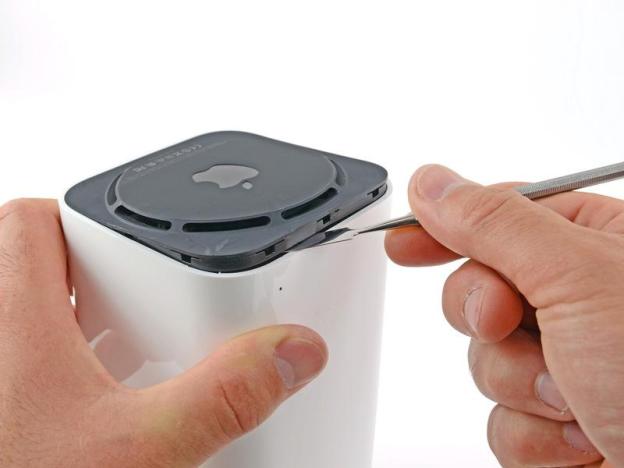

To start, iFixit disassembled the outer casing. This is a relatively simple affair, but it does require a Torx driver. iFixit also warns that the opening procedure requires a little bit of prying, and you could easily damage the casing itself if you’re not careful.
Once the casing was free, iFixit revealed an empty space within the center of the tower-like structure. The void is about 3.5-inches in size and perfectly accommodates an HDD of that size. Unfortunately, there isn’t any place to connect the HDD itself, and, even after opening the device fully, iFixit didn’t discover any hidden connection ports. iFixit designated three different sides for the device once the shell was off, pointing out the “port side,” the “slot side,” (which is the empty space), and the “fan side.” The fact that you must remove a number of screws just to clean the fan is a potential issue.

The final verdict from iFixit was a teardown score of 8 out of 10 (10 being the easiest to get into and repair). The group was pleasantly surprised with how simple it was to get into the device and noted it didn’t have to fool with any proprietary fasteners or parts to almost completely disassemble the tower-like creation. The good news here is that the AirPort appears to be fairly DIY friendly (if you have access to Torx drivers, spudgers, and a 54-bit driver kit).
Photo via iFixit


